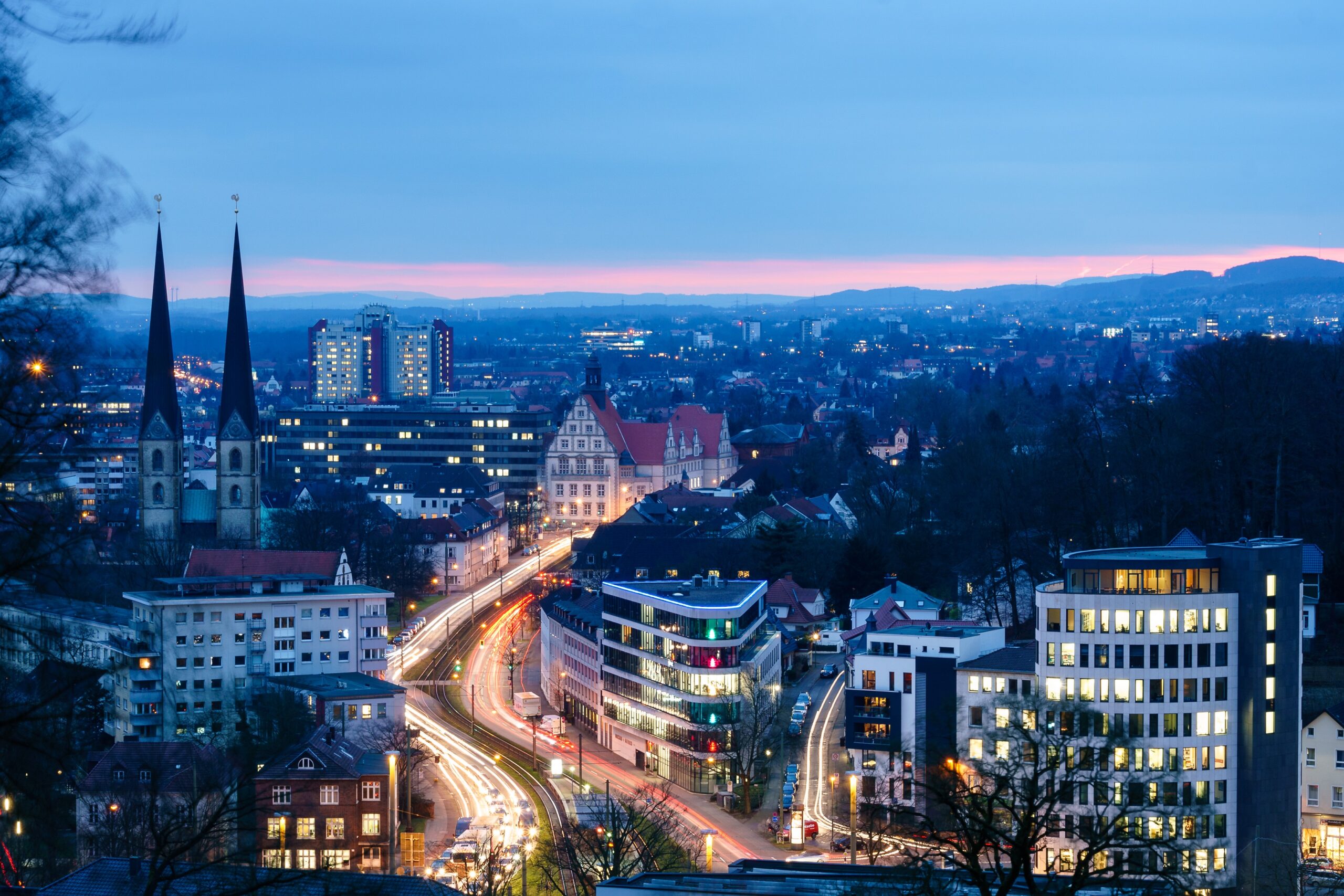by Anne Walther
Updated on May 28, 2024
Conspiracy theories and myths are as old as humanity itself. A particularly famous one in Germany is the Bielefeld conspiracy (Die Bielefeld Verschwörung), a satirical theory that questions the existence of the city. What started out as a joke amongst friends has turned into a much-quoted running gag on the German-speaking internet, and is often used to show how conspiracy theories build their argument.
The story maintains that Bielefeld doesn’t exist and is in fact just a facade to hide a big secret – for example, that the university is just an alien shipwreck and the government is trying to conceal it. Let’s find out what’s behind the Bielefeld myth!
Picture this: A student party in Kiel in the year 1993 that informatics student Achim Held is attending. His friend meets a person from Bielefeld at the party, and promptly tells the person: “Das gibt’s doch gar nicht!” Held overheard the exchange and, while this phrase is a common way to express surprise in German, Held joked with his friends about the literal meaning: “That doesn’t exist!”
From that moment on, the party-goers would expand the story about how Bielefeld was just a front to hide a secret government operation that “THEY” (always written in capital letters) don’t want people to know about. In addition, people were supposedly brainwashed into believing that Bielefeld was real and the Autobahn exit of Bielefeld – which was closed due to construction at the time – was the entrance to a secret government facility.
Achim Held published the story as a parody on the internet, intended to ridicule conspiracy theories, where it quickly gained fame. Over time, additional “evidence” was gathered to prove that the city was not real, like the football club Arminia Bielefeld being sponsored by “THEM” hidden under the brand name Gerry Weber.
After almost thirty years, the Bielefeld conspiracy remains part of German pop culture. For example, a thriller called Die Bielefeld-Verschwörung was published in 2010. In addition, there are several books written about the subject. Even former chancellor Angela Merkel referenced the story in a speech in 2012.
The city itself has also embraced the myth. When Bielefeld celebrated its 800th anniversary, the theme of the festivities was “Das gibt’s doch gar nicht!” and the Facebook page of the city was temporarily changed to Bielefeldverschwörung in 2017. In 2019, the city offered a prize of one million euros to the person who could prove that it didn’t exist. Although more than 2000 people participated, nobody was able to convince the jury and the conspiracy was finally pronounced over. A memorial site for the myth has since been added to the city.
So do you believe in Bielefeld or not? The best way to convince yourself that the city exists is to plan a trip and see for yourself. After all, the western town has much to offer for visitors. For example, one can visit castle Sparrenburg or many other historical buildings, or spend the day in one of the nature areas. The Bielefeld region is also known for its Roman history, like the famous Varus battle between Romans and Germanic tribes in the Teutoburg forest.
When Armin Held and his friends came up with the Bielefeld conspiracy, nobody could have predicted that a joke at a student party would receive its own memorial site in the city and that it would even be known by the chancellor of the country. While Bielefeld may have officially shut down the conspiracy, its website is still well and alive and still provides visitors with all the information about why the town does not actually exist – so the only way to know for sure is to book your ticket to Germany and see for yourself!
